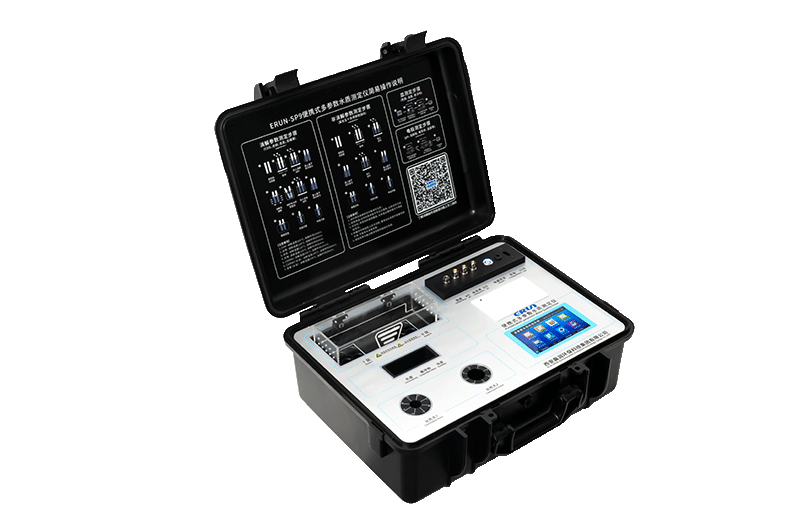Water is vital to every aspect of daily life—from drinking and cooking to industrial production and environmental protection. Yet, many people underestimate the complexity of water quality. Good water quality is not just about clarity or taste; it involves dozens of measurable indicators, including pH, conductivity, dissolved oxygen, salinity, and more. These parameters influence human health, industrial performance, ecological balance, and even regulatory compliance.
With rising concerns about pollution, aging infrastructure, and chemical contamination, the question “Why is water quality important?” has become more relevant than ever. To maintain safe and reliable water systems, accurate testing tools such as the ERUN-SP9 Multi-Parameter Water Quality Analyzer are essential.
This article explains why water quality matters, what parameters should be monitored, the risks of poor-quality water, and how advanced testing instruments help ensure safety across industries.
Water quality is defined by a combination of physical, chemical, and biological characteristics. These indicators help determine whether water is safe for drinking, agriculture, industrial processes, and environmental use.
Water with extremely high or low pH can cause corrosion in pipes, skin irritation, and poor taste. Neutral pH is essential for both health and equipment longevity.
These indicators show how many dissolved minerals and salts are in the water. High values may signal contamination or scaling issues in industrial systems.
DO levels influence aquatic life and wastewater treatment processes. Low DO can cause foul odors, fish die-offs, and ecological imbalances.
Water temperature affects chemical reactions, biological activity, and treatment efficiency.
Because these parameters interact with each other, accurate multi-parameter analysis is essential for understanding overall water quality.

Clean water prevents diseases, chemical exposure, and long-term health risks. Contaminants such as heavy metals, pathogens, and chemical byproducts can cause gastrointestinal illnesses, neurological problems, reproductive issues, and chronic disease.
Industries rely on stable water quality for:
Boiler and cooling tower efficiency
Food and beverage production
Pharmaceutical manufacturing
Chemical processes
Poor water quality can lead to scaling, corrosion, bacterial growth, and costly equipment failure.
Healthy ecosystems require stable pH, DO, temperature, and salinity. Polluted water disrupts aquatic habitats, reduces biodiversity, and harms fisheries.
Governments and global agencies (EPA, WHO) require strict monitoring of water parameters. Failure to meet standards can result in penalties, shutdowns, or public health risks.
For industries such as bottled water, food processing, or aquaculture, water quality directly affects product safety and brand reputation.
Uncontrolled contaminants can introduce viruses, bacteria, nitrates, microplastics, and chemical residues. Long-term exposure may lead to chronic illness.
High TDS or salinity accelerates corrosion. Low DO disrupts fermentation. Incorrect pH damages equipment and reduces productivity.
Polluted water leads to algal blooms, dead zones, and loss of aquatic species.
Municipal water systems must ensure that every parameter stays within safe limits. Failure can trigger boil-water notices or widespread contamination events.
These risks highlight the crucial need for precise and continuous water quality monitoring.
Traditional single-parameter tools often provide incomplete insights. Modern water systems require multi-parameter analysis to detect problems early and accurately.
Collects multiple indicators at once
Reduces testing time
Improves accuracy through cross-analysis
Enables real-time decision-making
Ensures compliance with water quality standards
This approach is now widely used in environmental monitoring, municipal water treatment, industrial process control, and aquaculture.
The ERUN-SP9 Multi-Parameter Water Quality Analyzer provides a comprehensive solution for industries requiring precise and efficient water testing.
ERUN-SP9 integrates advanced optical methods with a 16-channel design, enabling detection of more than 60 water quality parameters.
pH
Conductivity
TDS
Salinity
Dissolved Oxygen
Water Temperature
Additional chemical indicators, depending on configuration
Its flexible parameter configuration supports multiple use cases, allowing industries to customize their testing plan based on regulatory and operational needs.

Enables early detection of contamination
Ensures compliance with safety standards
Reduces operational costs by preventing equipment damage
Improves environmental sustainability
Enhances quality control for sensitive industries
Its precision and versatility make it a valuable asset for any organization managing water quality.
Water quality influences health, safety, industrial performance, and environmental stability. As contamination risks rise, accurate and comprehensive testing becomes essential. Multi-parameter tools like the ERUN-SP9 Water Quality Analyzer empower users to detect issues early, maintain regulatory compliance, and safeguard both human and environmental well-being.
Reliable water quality is not optional—it is a foundational requirement for a sustainable and safe future.